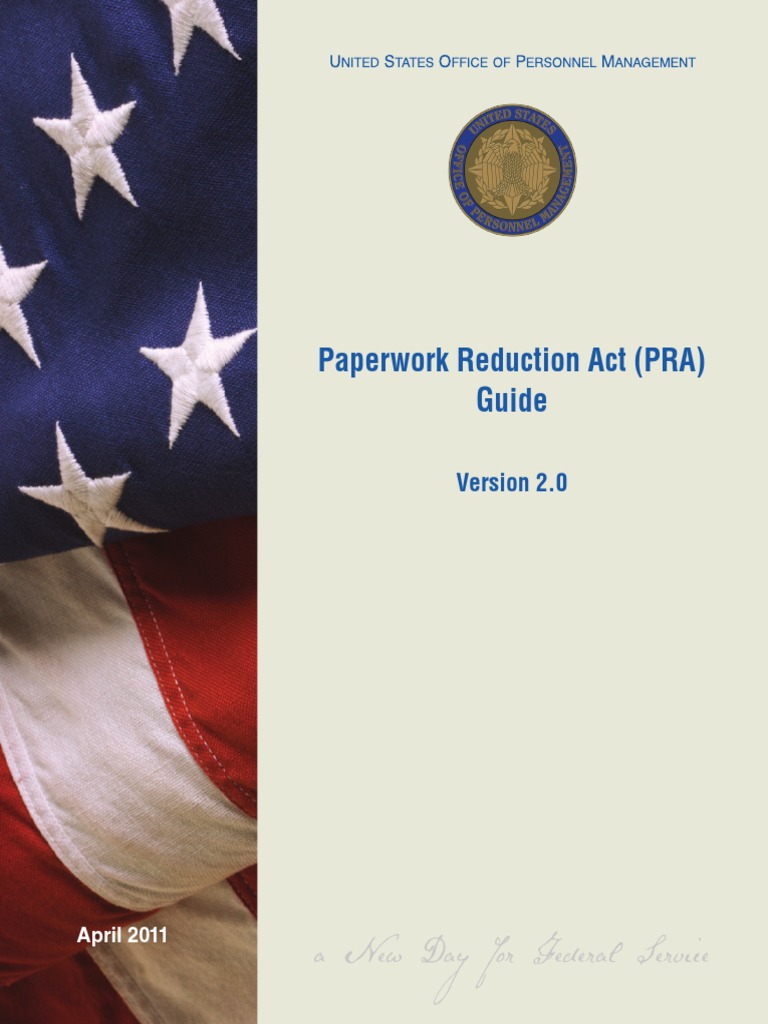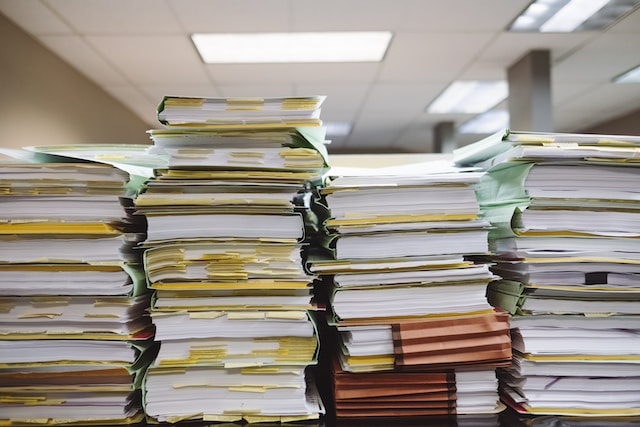Understanding the Paperwork Reduction Act: Simplify Your Compliance

In an era where paperwork can quickly pile up, creating chaos and inefficiency, the Paperwork Reduction Act (PRA) stands as a beacon for reducing the administrative burden on businesses, individuals, and government agencies. Enacted in 1980 and amended several times since, this legislation aims to minimize the time, effort, and financial resources required to comply with federal information collection efforts. By understanding the PRA, organizations and individuals can streamline their processes, ensuring they are not overwhelmed by unnecessary paperwork. Here, we delve into what the Paperwork Reduction Act entails, how it impacts various sectors, and how you can comply more effectively.
What is the Paperwork Reduction Act?

The Paperwork Reduction Act was enacted to address the growing problem of paperwork overload from federal agencies. Here are some key points:
- It mandates that all federal agencies ensure their information collection activities are necessary and reduce unnecessary burdens on the public.
- Agencies must seek approval from the Office of Management and Budget (OMB) for new collections or significant revisions to existing ones.
- Public participation in the process is encouraged through public comments on proposed collections.
- The PRA also aims to improve the quality, utility, and clarity of the information collected.

The Impact of the PRA on Businesses

Businesses often find themselves tangled in the complexities of compliance with federal regulations, especially when it comes to paperwork. Here’s how the PRA impacts businesses:
- Reduced Information Collection Burden: Agencies must now consider the time and cost of compliance, leading to more streamlined requests.
- Increased Transparency: Businesses can voice their concerns or suggestions during the public comment period, influencing how regulations are formed.
- Lower Costs: Efficient information collection practices can lead to significant savings in terms of time and money for both businesses and the government.
- Better Data Quality: With the focus on collecting relevant and useful data, businesses receive requests for information that is more meaningful and less redundant.
🌟 Note: Understanding the PRA can be a competitive advantage as it can lead to quicker compliance and reduced operational costs.
Steps for Compliance with the PRA

Compliance with the PRA can be streamlined if you follow these steps:
- Review New Information Collection Requests: When an agency issues a new collection request, businesses should review it to understand what’s required.
- Participate in Public Comment: Provide feedback during the public comment period to influence the final form of the collection.
- Document and Track Your Time: Keep records of the time and resources spent complying with information requests for future reference or disputes.
- Respond to Approved Collections: Once a collection is approved by OMB, respond within the stipulated time frame, ensuring accuracy and completeness.
- Stay Informed: Keep abreast of amendments or new guidelines issued under the PRA to ensure ongoing compliance.

Challenges in PRA Compliance

Despite its intentions, PRA compliance can present challenges:
- Understanding the Regulations: Sometimes, the complexity of the PRA and related regulations can be overwhelming.
- Time and Resources: Even with the PRA, information requests can still be time-consuming and resource-intensive.
- Changes in Policy: Regular updates to the PRA and its implementing guidelines can create uncertainty for businesses.
🌐 Note: Businesses can consider hiring regulatory compliance specialists or using compliance software to manage these challenges effectively.
Case Studies of PRA Implementation

Let’s look at how the PRA has impacted different sectors:
| Industry | Impact |
|---|---|
| Healthcare | Streamlined reporting of patient care outcomes, reducing the administrative load on providers. |
| Finance | Improved efficiency in reporting financial transactions and reduced the frequency of unnecessary data requests. |
| Environment | Enhanced public participation in environmental policy decisions through clearer and more concise information collection efforts. |


Final Thoughts

The Paperwork Reduction Act is more than just a regulation; it’s a pathway to simplifying life for businesses, individuals, and government entities alike. By understanding and adhering to the PRA, entities can focus on their core activities rather than being bogged down by administrative paperwork. The act’s framework encourages more efficient communication between the government and the public, fostering a more responsive and less intrusive regulatory environment. It’s in everyone’s interest to engage with the PRA, provide feedback, and work towards reducing the burden of unnecessary information collection. The impact of the PRA extends beyond mere compliance; it leads to better policy-making, improved public trust, and ultimately, a more efficient society.
Who has to comply with the Paperwork Reduction Act?

+
Both federal agencies seeking information and the public (including businesses and individuals) responding to these requests must comply with the PRA.
How often are information collection requests reviewed under the PRA?

+
Information collection requests are typically reviewed every three years when agencies must renew their approval from the OMB.
What happens if an agency does not comply with the PRA?

+
Non-compliance can lead to the information collection being deemed invalid, possible injunctions, or the requirement for agencies to reissue requests with proper compliance measures in place.